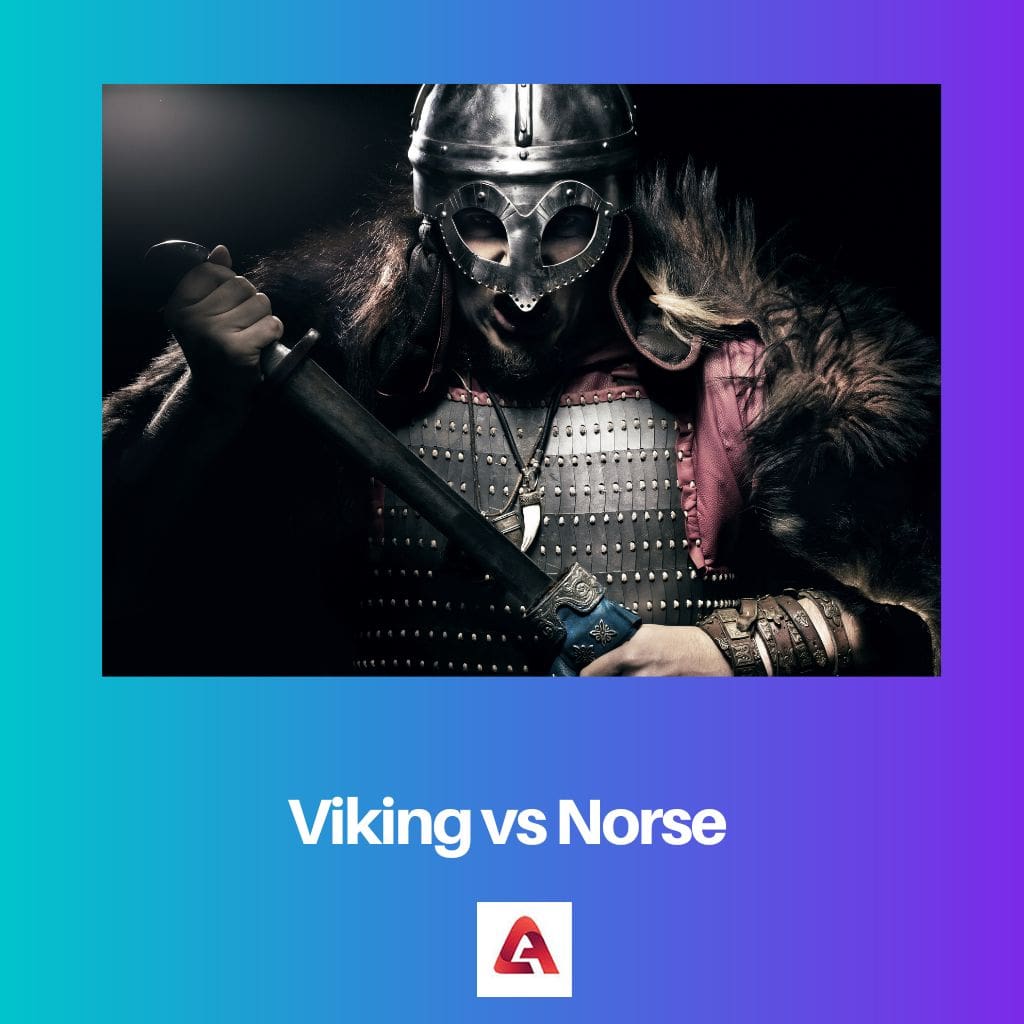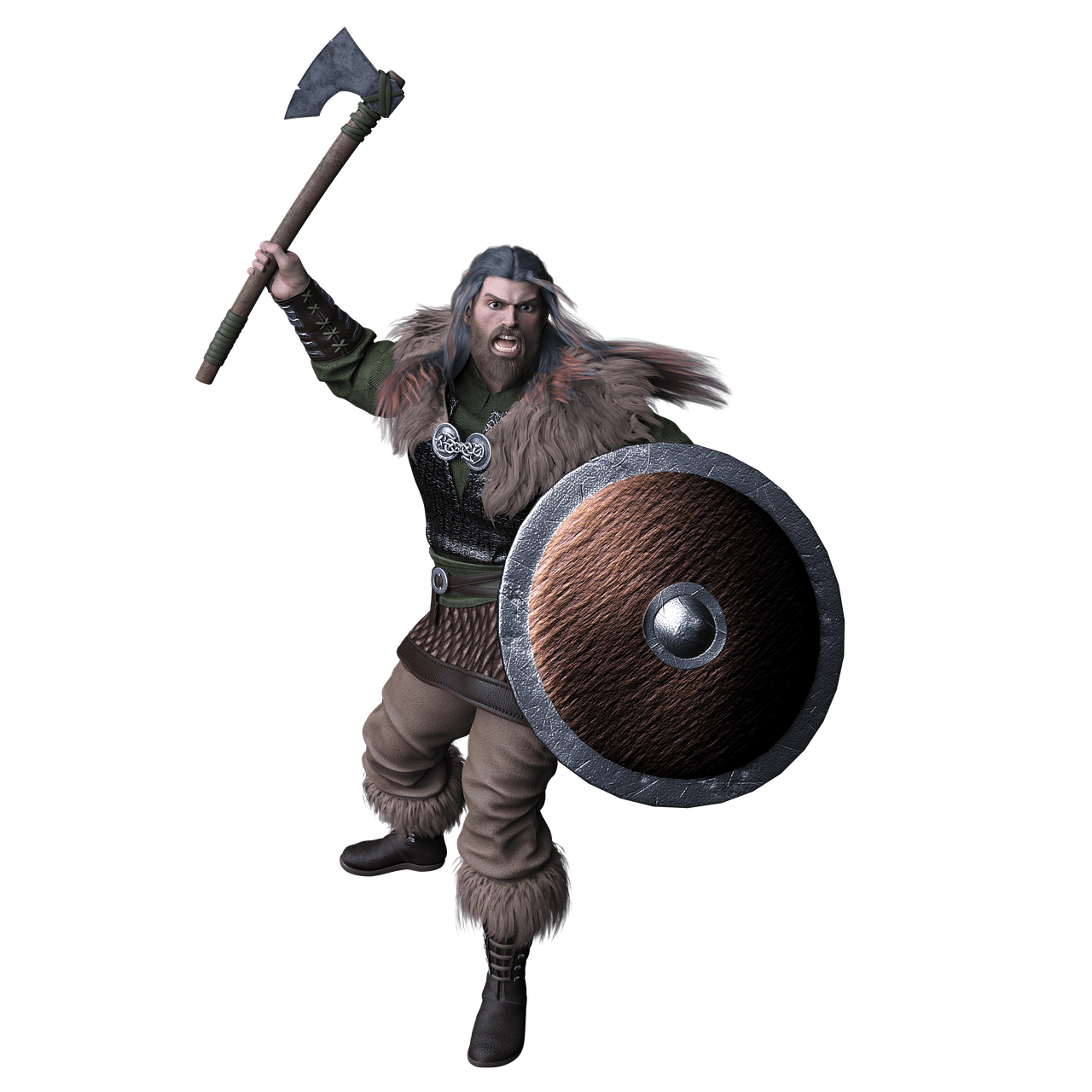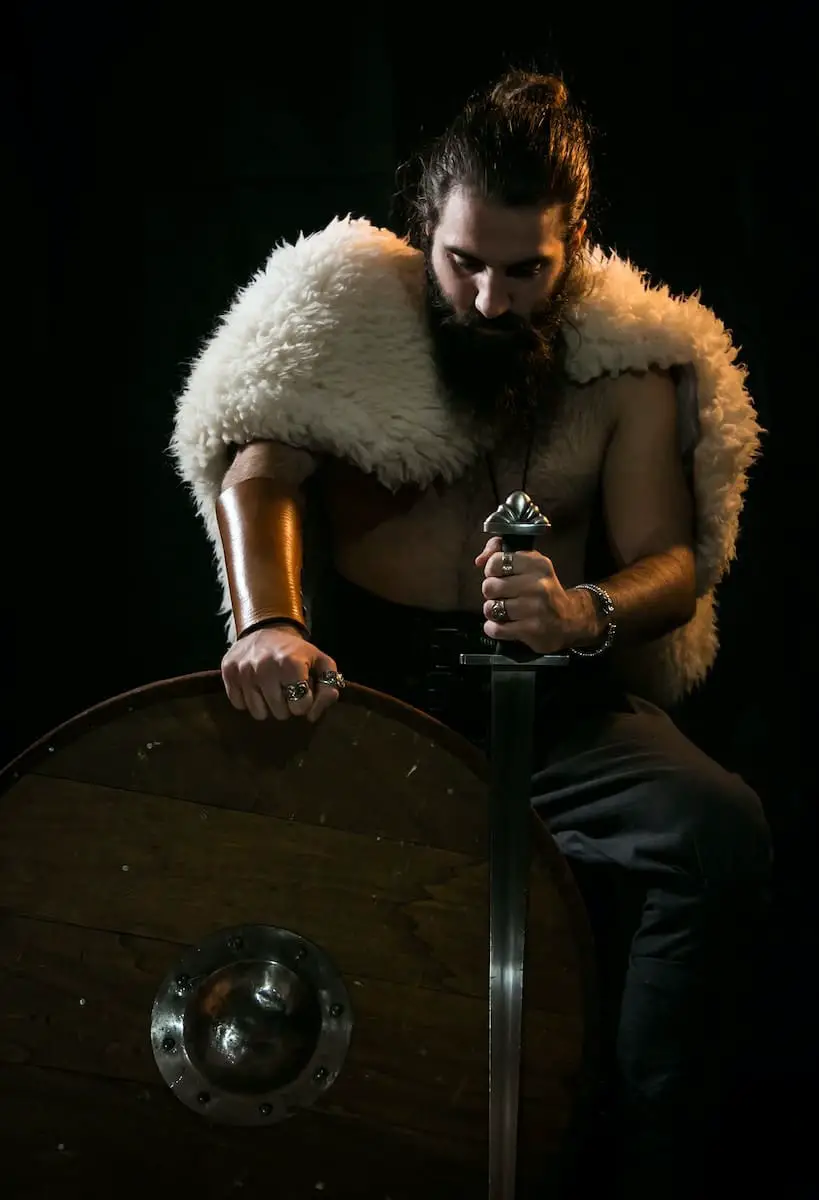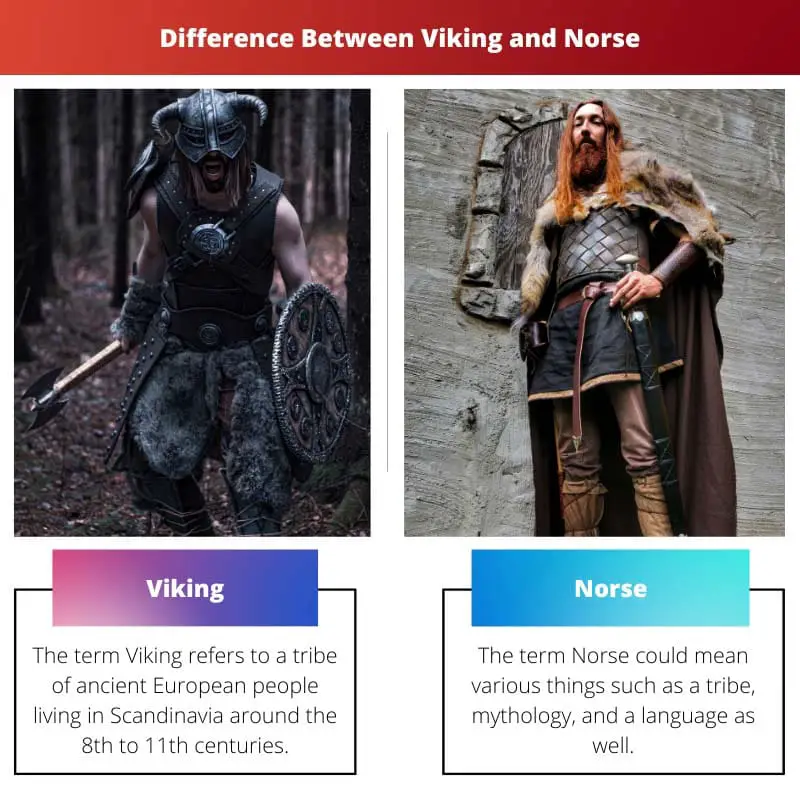The world is filled with incredible and marvelous histories. Each country once had a very unique and interesting history. Some of them existed while some of them are stunning mythologies.
Similarly, Viking and Norse are two terms belonging to medieval Europe. Both are so interesting and nice that there are many novels, stories, and films are inspired by them.
Key Takeaways
- Vikings were seafaring warriors from Scandinavia from the late eighth to the early eleventh century, while Norse refers to medieval Scandinavia’s people, culture, and language.
- Vikings participated in raids, trade, and exploration, while Norse culture encompasses a broader range of aspects such as mythology, art, and literature.
- All Vikings were Norse, but not all Norse were Vikings, as the term Viking specifically denotes the seafaring subset of the Norse population.
Viking vs Norse
Norse are the people, language, and culture of Scandinavia during the Viking Age. Vikings were a specific group of Norse seafarers known for their raiding and exploration. While not all Norse people were Vikings, the Viking Age is associated with Norse culture and history.

Viking is an academic or modern name given to the people who once lived in Scandinavia and within some years they were settled across northern and western Europe around the 11th century.
These people earned their living by trading and raiding. They also sailed for many different parts of Europe.
Norse is also designated as Scandinavian mythology and belongs to the North Germanic reign. It is described as the body of myths. This mythology is known to have originated from Norse paganism.
Norsemen also earned their living by trading and raiding. Norse also refers to a language that was spoken by people in medieval times.
Comparison Table
| Parameters Of Comparison | Viking | Norse |
|---|---|---|
| Meaning | The term Viking refers to a tribe of ancient European people living in Scandinavia around the 8th to 11th centuries. | The term Norse could mean various things such as a tribe, mythology, and a language as well. |
| Habitat | Vikings originated from Scandinavia and were then spared in Scotland, England, Wales, Ireland, and some other European countries. | Norse also originated from Scandinavia and then spread in France, North America, Greenland, Britain, etc. |
| Time | The time in which Vikings lived is known to modern people as the Viking Age. | The time in which Norsemen lived is known to modern people as the Proto-Norse period. |
| Gods | Vikings were common people who worshipped natural things like rocks, waterfalls, trees, etc. | Norse mythology is filled with charming multiple gods and goddesses, some of them are Odin and Thor. |
| Other names | The other terms that denoted Vikings in different places are Ascomanni, Finngail, Dene, Lochlannaich, Northmonn, etc. | The other terms that denoted ‘Norse’ in different places are Ashmen, Norsemen, Lochlanach, nordic, Norwegian, etc. |
What is Viking?
Viking is a title worn by people in ancient Europe who lived on trading and looting other people.
They lived in Scandinavia which is presently known to be Sweden, Denmark, or maybe Norway. Vikings used to travel across multiple places in Europe and sailed for the Middle East, North America, Mediterranean, and North Africa for trading.
It is observed that, in the age of Vikings, males and females used to have similar facial features.
When a person comes across the term Viking, he immediately thinks of a man who is very tall and huge with a horned helmet, it is also assumed that Vikings were brutal and messy.
But the fossils or skeletons found from the Viking age indicate another perspective.
Vikings did have a rough lifestyle but they are as tall as human beings are now. The average height of a male was around 5’6 feet while women were almost 5’1 feet tall.
Vikings are also known as Ashman where Ash is a German word for wood.
In some regions, Vikings were called Finngai and Dubgail which means foreigners and dark respectively. The Irish term for Vikings is Lochlannaich which translates into people from the land of lakes.
There are many things found that elaborate the culture and civilization of Vikings.

What is Norse?
Norse is German mythology which was considered to be a religion in primitive times. This mythology is filled with tales of gods and goddesses.
A Marvel comic’s superhero belongs to Norse mythology, a God who wielded a hammer and was named Thor.
Other Gods also belonged to Norse mythology, for example, one-eyed God Odin, goddess Freyja, goddess Skaði, an occult god Heimdallr, a mighty God Njörðr, son of jötunn and God of mischief Loki, Norse mythology is portrayed beautifully by Marvel studios.
Norse mythology was nourished during the Proto-Norse period.
In other words, Norse mythology is simply tales and stories of mythical Gods that are sung and told by Norse tribes. Norse mythology is a salient part of the religion that was followed by the German people of ancient times.
It is also said that the names of days are inspired or devoted to the God and goddess of Norse mythology, for example, Tuesday for Tyr, Wednesday for Odin, Thursday for Thor, Friday for Freya, and so on.
The Norse religion was a polytheistic religion, by that one can understand, when people believe in and worship multiple gods.
But by that time, people who followed Norse mythology and religion later adopted Christianity. Norse had a beautiful cosmology that included amazing mythical people and places.

Main Differences Between Viking and Norse
- The word Viking is made of the old Norse word vík and old English word wík, together víkíngr. While a Dutch word noordsch and Norwegian word Norsk formed the word Norse.
- The languages spoken by Vikings were English, old English, and sometimes old Norse. While Norsemen spoke old Norse and Old Icelandic.
- Vikings didn’t follow any certain type of mythology and some of them followed Norse mythology. While Norsemen believed in Norse mythology that introduced around 65 Gods.
- Vikings were traders and it said that they used to loot others, they were part-time warriors as well. While Norse people were thoroughly traders.
- The people who are now known as Vikings lived in the Viking age. On the other hand, the period of the Norsemen people is designated as Proto-Norse.




